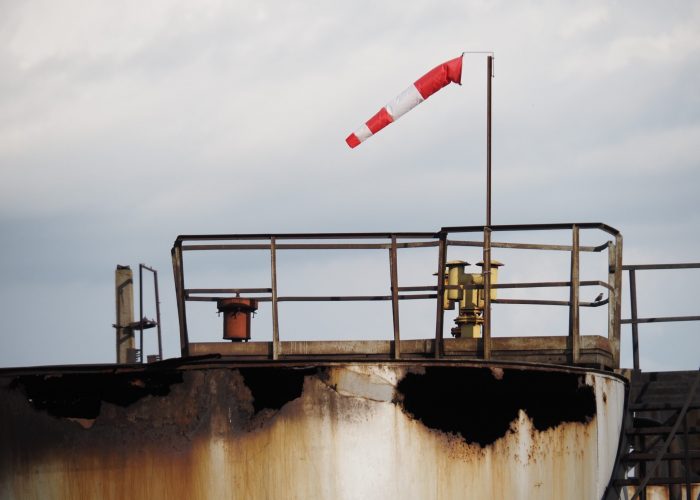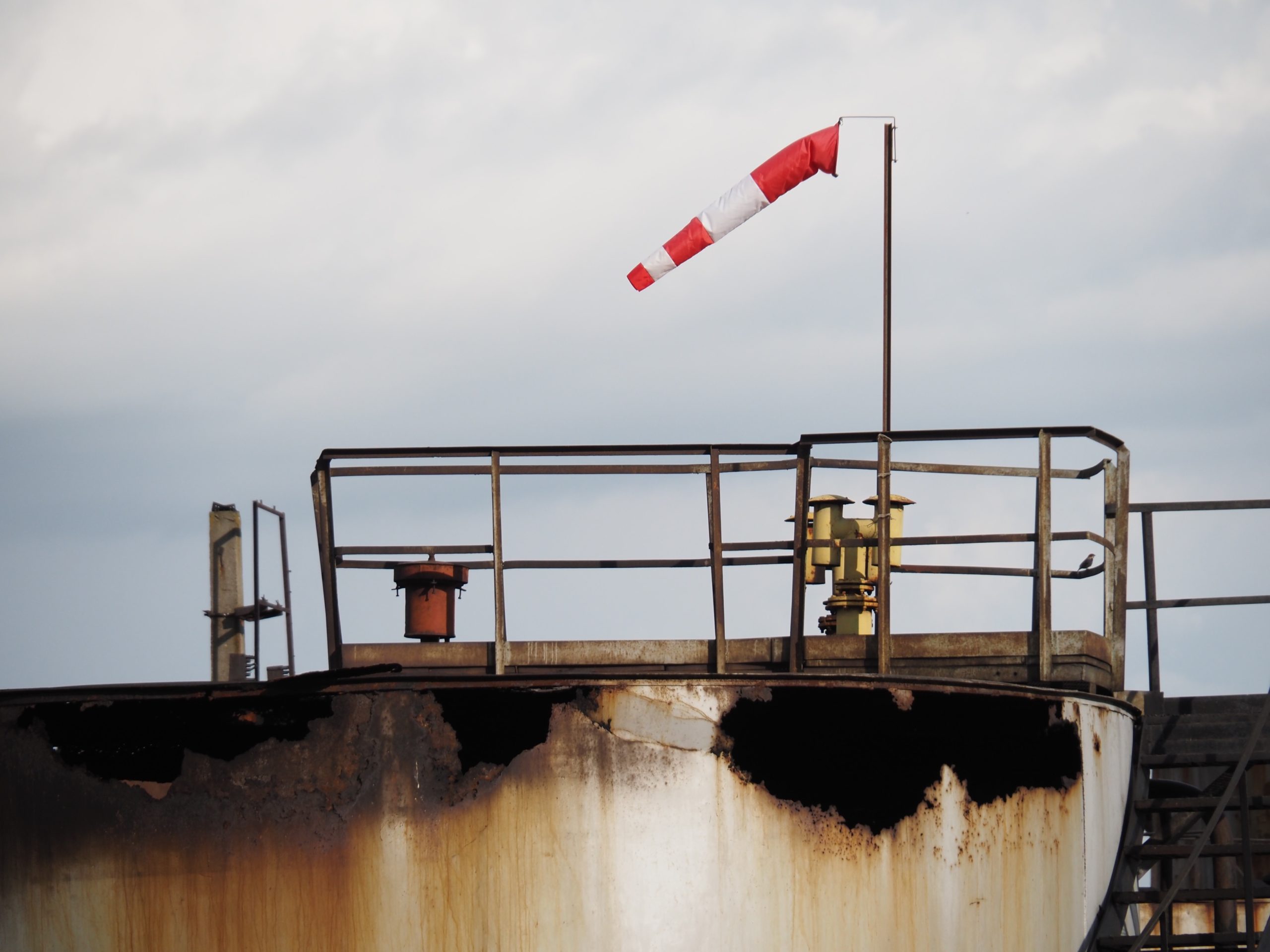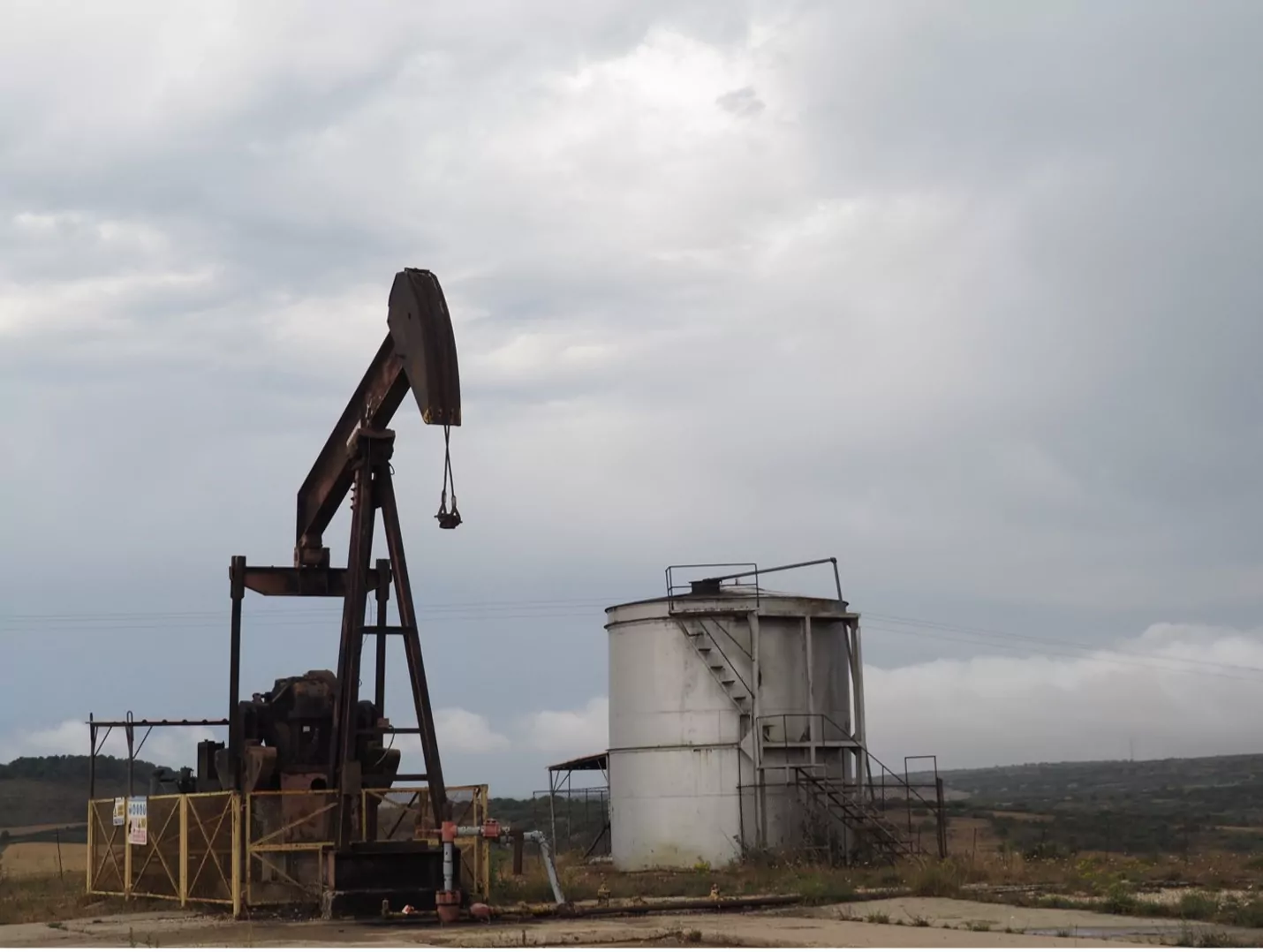Upstream: Production and Processing
Exploration and Production
The production process is the first stage of the oil and gas flow. The oil and gas production process includes many diverse activities, such as the production of hydrocarbons from underground geologic formations; separation of natural gas, oil, and, water; and collection of gas from multiple wells through natural gas gathering pipeline systems. These activities in turn involve processes such as well drilling, hydraulic fracturing, or other stimulation for many wells, and well workovers. These activities require equipment such as tanks, piping, valves, meters, separators, dehydrators, pipelines, and gathering compressors.
Gathering and Boosting
Gathering pipelines collect gas from various good pads in a production region and deliver to a processing plant. Gathering and Boosting compressor stations maintain gas pressure along gathering pipelines.
In Europe, there is a long history of oil and gas development, with a number of areas still producing considerable amounts of oil and gas, but most of the oil and gas consumed in Europe is imported from major suppliers around the world. Practices of energy exporters may differ from those within the European Union.
Gas Processing Plants
Gas is brought to a processing station where it is separated and refined before entering the larger pipeline distribution network. Gas processing plants separate raw fossil gas into gas liquids and processed gas that meets specifications for transport in high-pressure pipelines and consumption in furnaces and power plants. Gas liquids are hydrocarbons such as propane, butane, etc., which are valuable products of gas processing.
Midstream: Transmission and Storage
Transmission pipelines carry gas from producing regions to markets. This stage also includes facilities where gas is stored, either underground or as a liquid. In Europe, an increasing amount of gas is imported through the transport of liquified natural gas (LNG) from major producing countries. LNG terminals are located throughout the EU that allows condensed gas to enter the European pipeline network via overseas transportation from LNG ships. Also found in the midstream process are large compressor stations, which help move gas along the pipeline network by maintaining a certain pressure.
LNG Ships
Large LNG tanker ships are used to transport liquified natural gas overseas.
LNG Terminals
Liquified natural gas enters and exits the pipelines through an LNG terminal. Gas is condensed to a liquid through a cooling process in order to prepare it for shipment or export. LNG terminals can be located either onshore or offshore. When an LNG ship arrives, the gas goes through a regasification process, where it is warmed and then pressurized to enter the pipeline network.
Transmission Compressor Stations
As the gas moves through a pipeline, it loses pressure. In order to maintain a constant flow rate, compressor stations are located approximately every 70-100 kilometers along a pipeline. Compressor stations typically contain a number of large compressor units. Smaller compressor units are also found at most processing and transmission facilities in order to pressurize the gas for transport or storage. Compressor stations are a major source of air pollution, including methane, volatile organic compounds, and many other harmful air pollutants.
Underground Gas Storage
Large amounts of gas are stored in underground storage facilities that allow gas companies to regulate the amount of supply in the network. In order to meet peak energy demand, gas will be taken out of the underground storage location. Gas can be stored underground in a depleted well, a salt cavern, or in a liquified form.
Downstream: Distribution
Finally, fossil gas is delivered to customers (residential, commercial, and light industrial) via low-pressure underground distribution pipelines. When gas enters a city from a transmission pipeline, it must be depressurized to meet the operating pressure of gas within the network. The local gas distributor controls the pressure with which gas enters the grid and regulates the grid distribution network. Downstream methane emissions represent a significant portion of the total methane emissions from the oil and gas industry in Europe.
Large Customers
Large gas customers like gas power plants and heavy industrial facilities (such as cement or steel) are often engineered to directly purchase gas from the transmission system.
Commercial, Residential, or Industrial Consumers
The endpoint for gas falls into these main categories. Gas is used for heating and energy at residential homes, commercial buildings, city electricity, and heavy industry, such as cement or steel production. Gas is distributed through cities using thousands of kilometers of distribution lines which are prone to leaks.
Common Sources of Emissions
During the upstream and midstream processes, emissions can occur through leaks and venting from various types of equipment or through the release of uncombusted or partially combusted hydrocarbons due to inefficient combustion. During the downstream processes, emissions often occur through leaky pipes.
Flaring and Venting
Operators often vent and flare fossil gas. At production sites, venting and flaring occurs when oil producers, driven by the rush to sell oil, simply dispose of the gas instead of building infrastructure to capture the gas.
Flaring is the process of converting methane into carbon dioxide through combustion. Flares also release a number of different harmful pollutants. Flares should operate at 98 percent efficiency, but sometimes they fail to do so. When this combustion is incomplete or inefficient, some methane is released into the atmosphere. At transmission and storage sites, venting and flaring often occurs because malfunctioning valves within the system, which are routed to the central relief stacks.
Venting is the release of methane into the air without any attempt to burn it. Venting is also done along pipelines and at compressor stations, in the case of emergency shutdowns. These events are known as blowdowns. This occurs if too much pressure builds up along sections of the pipeline and they need to release gas into the atmosphere.
Venting is much more harmful to the environment, since methane is a much more potent greenhouse gas than carbon dioxide, and Volatile Organic Compounds (VOC) and toxic pollutants are released unabated. It is more common for gas to be flared off—wasting energy and producing large amounts of carbon dioxide and other pollutants—but some is just dumped into the air through venting.
Both venting and flaring must be closely regulated in order to reduce methane pollution. Venting should be prohibited in all cases as it is an absolutely unnecessary source of harmful air pollution. Flaring should be a last resort: only in the most extreme cases should companies be allowed to flare gas, and it should be strictly a temporary measure.
Storage Tanks
Storage tanks are used to hold oil, condensate (liquids from the production process), and produced water from oil and gas wells. Wells are usually kept at a high pressure, but oil, water, and other liquids are sometimes stored at wellsites in tanks held at or near atmospheric pressure. When the liquids are moved from the high-pressure well to the atmospheric-pressure tank, methane and other volatile hydrocarbons that are dissolved in the liquids bubble or “flash” out of the liquid, just as bubbles come out of soda when you take the cap off the bottle, reducing the pressure in the bottle. Many tanks have no controls, so the methane is released into the atmosphere, together with the other volatile hydrocarbons. These other hydrocarbons are potent precursors of regional ozone smog, and they also include toxic air pollutants. Tanks emissions can be controlled, and the hydrocarbons conserved for sale, by using vapor recovery units – small compressors that are designed to capture these hydrocarbon vapors so that they can be pressurized and sent into a pipeline.
Pneumatic Equipment Venting
Gas-driven automatic pneumatic equipment uses the pressure energy of fossil gas in pipelines to control and operate valves and operate pumps. This approach allows operators to automate equipment at sites without electricity – which is very typical for oil and gas sites in some nations. In these nations, pneumatic equipment is often used at oil and gas production and compression facilities, and it is designed to vent natural gas into the atmosphere. If there are no regulatory drivers to ban their use, sites still use non-low bleed pneumatics at times because no one tells them that they cannot.
Pneumatic valve controllers automatically operate valves based on factors like a liquid level in a liquid-gas separator, pressure, or temperature. They can be classified based on whether and how rapidly they vent or “bleed” natural gas and whether they bleed continuously or intermittently (typically only when performing some function). Controllers can either be classified as high-bleed or low-bleed. However, it has also been shown that controllers specified as “low-bleed” often malfunction, causing emissions that are much higher than than the low-bleed threshold.
Thus, a more effective mitigation strategy is the use of “zero-bleed” controllers, which vent no natural gas, by either utilizing compressed air or electrical power to operate instead of pressurized natural gas or by capturing for further use the natural gas that would otherwise be vented. Some zero-bleed devices are powered with solar-generated electricity, while others require electricity from the grid or an on-site gas-powered generator, or air compressed with a natural gas-powered engine.
Pneumatic pumps use the pressure of gas to supply the energy required to circulate and pressurize liquids. For example, they are used to introduce liquid chemicals such as corrosion inhibitors into gas pipelines. Electric pumps, which are often solar-powered, completely eliminate methane emissions and are technically feasible in many locations.
Separators
Various types of separators are used to process oil, gas, and water in the initial stage of the production process. When oil and gas are pumped from the ground, they often go through a horizontal or vertical separator. These separators, as the name suggests, separate production water, oil, and gas before they are further processed and refined.
Dehydrators
Dehydrators remove water from the natural gas stream, usually with a chemical compounds known as glycols. They are found at all stages of the gas flow process (upstream, midstream, and downstream), but are most commonly used during the production process to remove any water from the gas before it enters transmission pipelines. When emissions from glycol dehydrators are not controlled, the dehydrators vent a large amount of methane and other pollutants. Dehydrators are also large sources of volatile organic compounds (VOCs), and particularly large sources of toxic air pollutants.
Cleaning up methane from dehydrators will reduce emissions from hazardous air pollutants too, with important benefits for air quality. There are a number of approaches to reducing emissions from dehydrator venting, such as adjusting circulation rates of the glycol fluid; routing the vent gas to a burner used to heat the glycol, so methane and toxics are combusted; use of a condenser to capture heavier VOC and toxics from the vent gas (which does not capture methane); and routing emissions to a flare or incinerator.
Compressors
Compressors are found throughout the oil and gas flow in the upstream, midstream and downstream processes, but they are most commonly used in the upstream and midstream process. The purpose of compressors is the pressure gas to move it along the pipeline. Compressors can be a significant source of preventable methane emissions, particularly the seals that care commonly found on compressors.
There are two types of compressors.
Reciprocating compressors use pistons to compress gas. These compressors have seals on the rods that transmit motion from the engine to the pistons inside the high-pressure compressor cylinders; these seals are often referred to as rod packing and are a large source of emissions. Even when new, the seals let some gas escape. Over time they wear, letting more gas out. If not regularly replaced, emissions can become very large: the older the seals are, the more methane they emit. Fortunately, these methane emissions can easily be reduced. First, proper maintenance practices— regular replacement of rod-packing—minimize emissions and should be required. An available additional or alternative approach is to capture gas that escapes from rod packing and utilize it, such as by adding it to the fuel/air mixture for the compressor engine. This can be a superior approach since some gas escapes even from newly installed rod-packing.
Centrifugal compressors use a spinning turbine to pressurize gas. The rapidly rotating main shaft of the compressor is generally sealed with one of two technologies. Wet seals circulate oil to seal the narrow gap between the shaft and its housing. This oil absorbs significant amounts of the high-pressure natural gas that must be removed from the oil before recirculation. Typically, the gas removed from the seal oil is vented, resulting in substantial emissions. Dry seals, in contrast, use a more modern design to avoid the use of seal oil, with much lower emissions. Methane emissions can be cheaply and substantially reduced by requiring centrifugal compressors to use dry seals or to redirect gas that would be vented from a wet-seal compressor back into the pipeline system or another use.





